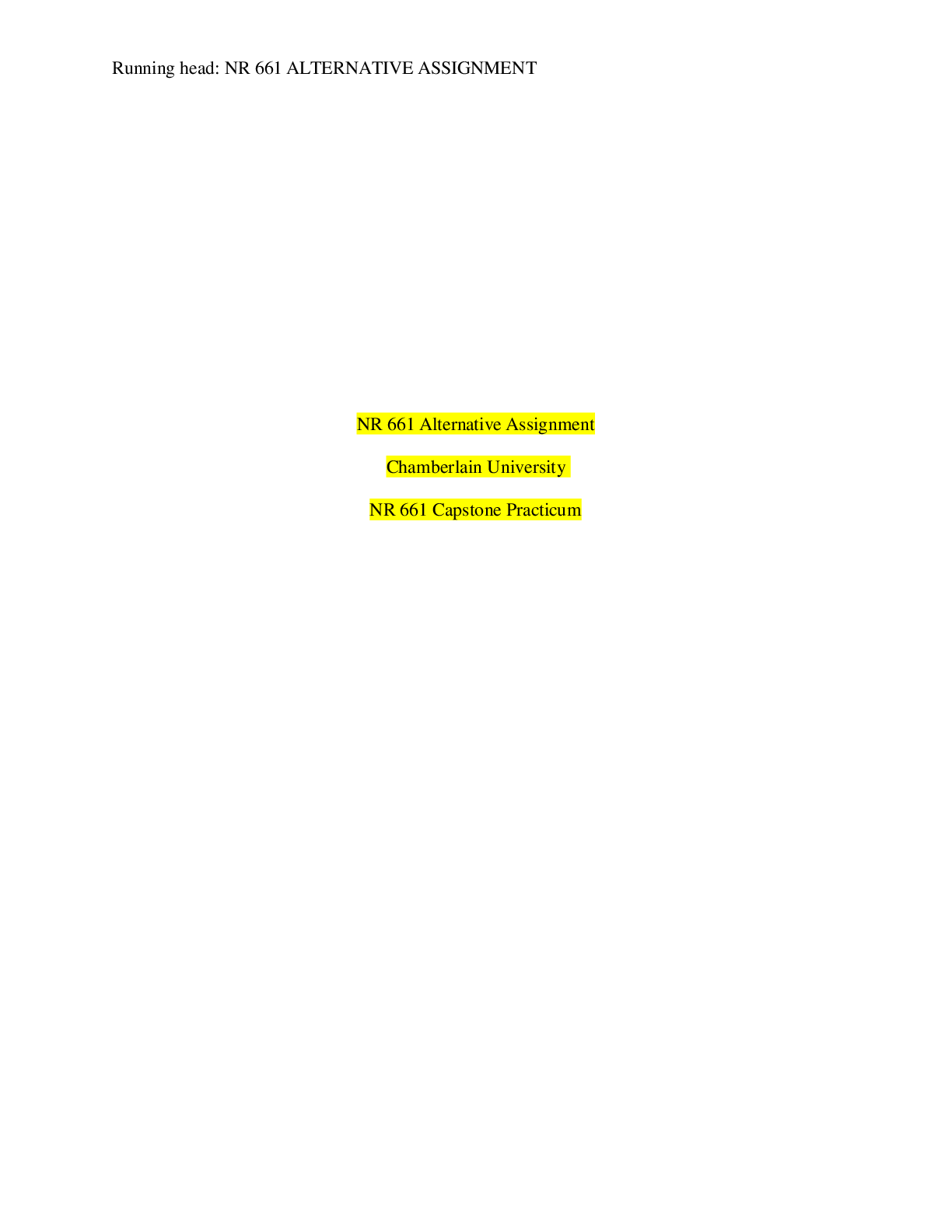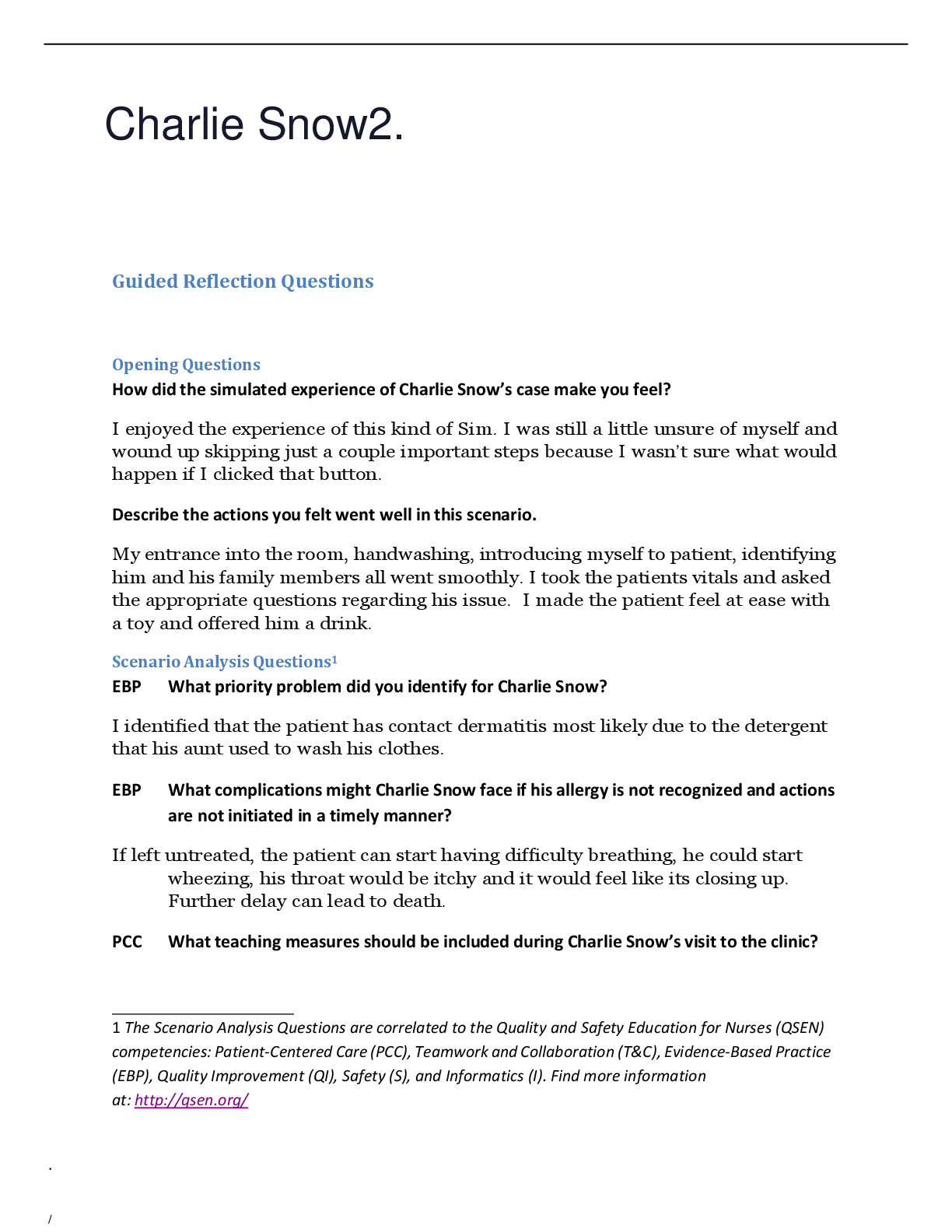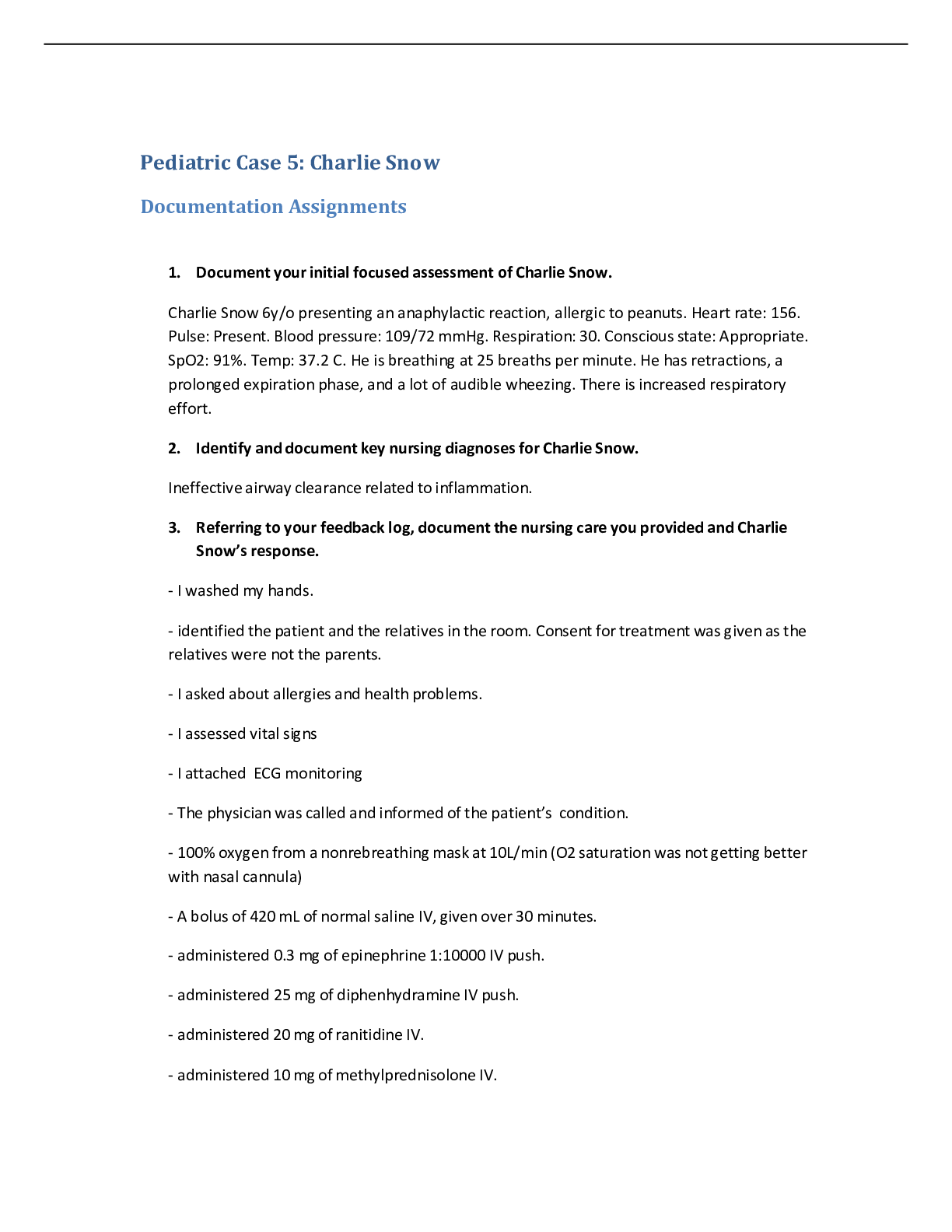*NURSING > EXAM > NR 661 Alternative Assignment_ NR 661 Capstone Practicum: Chamberlain University LATEST VERSION 2021 (All)
NR 661 Alternative Assignment_ NR 661 Capstone Practicum: Chamberlain University LATEST VERSION 2021.
Document Content and Description Below
Table of Contents • Introduction • Disease Presentations o HEENT ( Mastoiditis, Corneal Abrasion) o Pulmonary (Pertussis, Cystic Fibrosis) o Hematology (Lead Toxicity, RH Incomparability) o Neurol... ogy (Carpal Tunnel Syndrome, Meningitis) o Gastrointestinal (Hirschsprung’s Disease, Appendicitis) o Cardiovascular (Heart Murmurs, Kawasaki Syndrome) o Orthopedic (Rotator Cuff Syndrome, Gout) o Endocrinology (Addison’s Disease, Precocious Puberty) o Dermatology (Fifth Disease, Herpangina) o Urology and STD (Trichomoniasis, Urinary Incontinence) o Pregnancy (Incompetent Cervix, Acute Cystitis) o Men’s Health ( Testicular Cancer, Erectile Dysfunction) o Psychiatry ( Bulimia Nervosa, Anorexia Nervosa) o Growth and Development ( Down Syndrome, Failure to Thrive) • Health promotion o Depression Screening in Adolescents o Prostate Cancer Screening • Conclusion Introduction: As a future Nurse Practitioner, I know I will encounter countless patients whom will present an array of disease signs and symptoms. While I understand that I cannot be fully and completely prepared for what I will encounter, I do understand that I must prepare myself as much as I can. Based on the results from my predictor exam and recounting the information I have reviewed, I know there are several diseases that need I need to understand better. Therefore, I will base this paper on those diseases. Furthermore, I will discuss health promotion in areas that I am less familiar, and I will justify why health promotion is needed in such areas. The last portion of this paper will consist of presenting the common signs and symptoms patients exhibit that make it appropriate for screening to be done. Disease Presentations HEENT (Mastoiditis, Corneal Abrasion) Mastoiditis is a bacterial infection affecting the Mastoid Process-more specifically, the mastoid cells and the mastoid antrum. This infection usually results from an untreated or inadequate treated Acute Otitis Media. The common organisms causing this infection are: Haemophilus Influenzae, Streptococcus Pneumoniae, Moraxella Catarrhalis, Staphylococcus Aureus, Pseudomonas Aeruginosa, some Mycobacterium species and some fungi as well. The course of this infection begins when the bacteria causing the Acute Otitis Media (AOM) invades this region causing the air cells to become filled with blood and pus. The increased blood and pus causes cell to coalesce (fused together) forming abscesses and decreasing circulation. The fusing together of cells contributes to decreased blood supply to the bone cells leading to cell death (bone death) [Show More]
Last updated: 2 years ago
Preview 1 out of 24 pages

Buy this document to get the full access instantly
Instant Download Access after purchase
Buy NowInstant download
We Accept:

Reviews( 0 )
$20.00
Can't find what you want? Try our AI powered Search
Document information
Connected school, study & course
About the document
Uploaded On
Feb 06, 2021
Number of pages
24
Written in
Additional information
This document has been written for:
Uploaded
Feb 06, 2021
Downloads
0
Views
55














